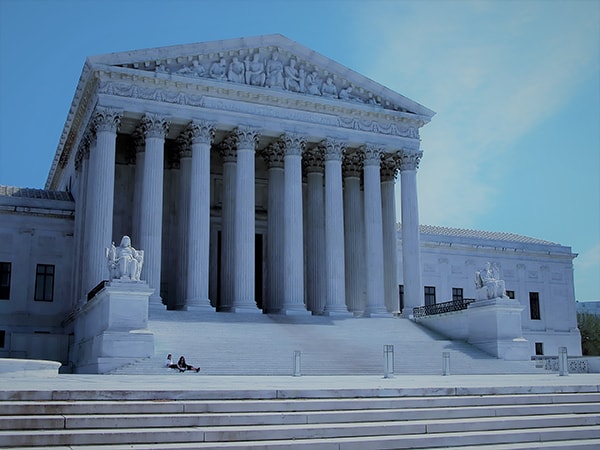Leading Federal Appeal Attorneys: Your Companions in Browsing the Appeals Process
Leading Federal Appeal Attorneys: Your Companions in Browsing the Appeals Process
Blog Article
Debunking the Process of Federal Appeals: What You Need to Know
Navigating the intricate world of government appeals can frequently seem like going across uncharted waters for those not familiar with the process. Understanding the nuances of appellate court jurisdiction, the complexities of filing a notice of charm, providing an engaging short, and making a convincing oral disagreement are important elements that can substantially affect the result of a situation. By unwinding the layers of complexity surrounding federal appeals, people can obtain a clearer insight into the devices that control this essential phase of the lawful system.
Comprehending Federal Appeals Process
Exploring the detailed world of the government charms process unveils a systematic and structured journey via the judicial system. Federal appeals function as an important mechanism for reviewing choices made by reduced courts. Comprehending this procedure is essential for anyone associated with lawful proceedings at the government degree.
The process typically starts with a celebration dissatisfied with a reduced court's judgment filing a notice of allure. This sets off a review by a greater court, where a panel of judges assesses the lawful arguments offered by both celebrations. Briefs outlining the lawful reasoning behind each celebration's position are sent, and oral debates may be heard to make clear complicated issues.
The appellate court's decision is based upon a detailed examination of the reduced court's proceedings and the arguments presented. The judges do not focus but review facts on whether lawful mistakes took place that influenced the lower court's decision. Once the appellate court reaches a choice, it can attest, turn around, remand, or change the reduced court's ruling, offering clarity and finality to the legal dispute. Understanding this procedure is vital for navigating the intricacies of government appeals successfully.
Appellate Court Territory Discussed
As we advance from understanding the government charms process to studying the ins and outs of appellate court jurisdiction, a fundamental facet comes to light regarding the authority and restrictions of these higher courts in the lawful landscape. Appellate court jurisdiction describes the range of cases that a certain appellate court has the power to examine and choose upon. Unlike trial courts that listen to cases for the initial time, appellate courts are limited to assessing decisions made by reduced courts. These decisions can consist of judgments from both state and federal courts.
Appellate courts have territory over particular sorts of cases, normally those involving legal mistakes, procedural problems, or inquiries of law rather than valid disputes. The jurisdiction of appellate courts is normally laid out in statutes and legislations that control the court system. Understanding appellate court jurisdiction is vital for parties associated with the charms procedure as it determines whether a case is eligible for testimonial and the extent to which the appellate court can intervene in the lower court's choice.
Filing a Notice of Charm
The first step in commencing the federal charms process includes submitting a Notification of Allure with the appropriate appellate court. This important file officially informs the court and the other parties associated with the situation that the appealing event plans to look for a testimonial of the reduced court's decision. Submitting a Notification of Charm is a rigorous step-by-step requirement that sets the appellate procedure moving.
When preparing the Notification of Charm, it is vital to make certain conformity with the certain rules and standards of the pertinent appellate court. federal appeal lawyers. The paper must commonly include details such as the case name, the reduced court's name, the day of the judgment being appealed, and a concise statement indicating the grounds for the allure

Briefing and Oral Debate
In the appellate process, offering written briefs and participating in dental arguments play pivotal roles in promoting for the appealing party's setting before the appellate court. Briefs are extensive lawful documents that detail the events' arguments, legal authorities, and evaluation sustaining their positions. These composed entries provide the court with a comprehensive understanding of the realities of the case, the relevant legislation, and why the appealing party thinks the reduced court's choice should be reversed.
Adhering to the entry and review of the briefs, oral arguments use the events a possibility to further clarify their positions, deal with any type of concerns the appellate courts may have, and highlight bottom lines from their created briefs. Dental debates are an opportunity for the attorneys to persuade the judges through verbal advocacy and responses to inquiries from the bench.
Both the composed briefs and dental arguments are important elements of the appellate process, enabling celebrations to provide their situation completely and compellingly before the appellate court. - Continued federal appeal attorneys
Getting the Appellate Court Decision
The appellate court's choice is typically provided in a created format and details the court's conclusions on the legal concerns offered, the reasoning behind their choice, and the judgment provided. The time framework for receiving the appellate court's decision can vary, yet courts strive to offer prompt resolutions. Whether the appellate court attests, reverses, or remands the lower court's choice, recognizing the implications of the ruling is vital for all events involved in the appellate process.
Final Thought
Comprehending the appellate court territory, submitting a notice of appeal, preparing briefs, and providing oral arguments are all vital components of this process. Inevitably, obtaining the appellate court choice can supply clearness and resolution to legal conflicts.
As we progress from understanding the government allures procedure to studying the intricacies of appellate court territory, a basic element comes to light concerning the authority and limits of these higher courts in the lawful landscape. Appellate court jurisdiction refers to the scope of cases that a certain appellate court has the power to choose and review upon. Unlike test courts that listen to cases for the very first time, appellate courts are limited to evaluating choices made by reduced courts. Understanding appellate court territory is vital for celebrations involved in the allures process as it determines whether an instance is eligible for testimonial and the degree to which the appellate court can intervene in the reduced court's decision.

Report this page